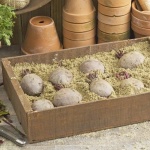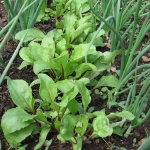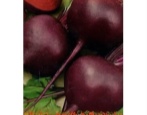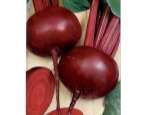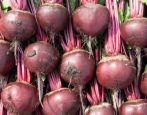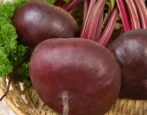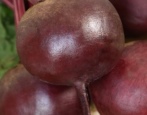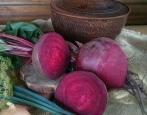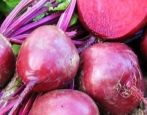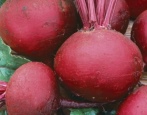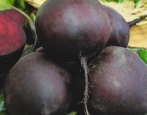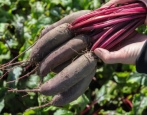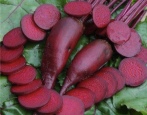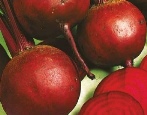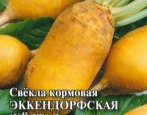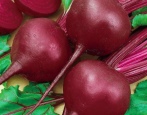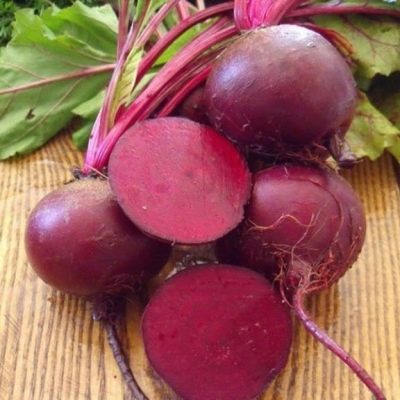
- Name synonyms: Detroit
- Year of approval: 1997
- Leaf rosette shape: semi-standing
- The form: rounded
- Weight, g: 111-212
- Pulp color : dark red
- Ringiness: no ringing
- Taste qualities: good ones
- Composition : dry matter content 17.6-20.4%, total sugar 12.3-14.2%
- Appointment: for culinary processing, for canning, for fresh use
Detroit beets originated in sunny Italy and were recognized as one of the best achievements of local breeding. The ability of the variety to successfully adapt to different climatic conditions has made Detroit popular in many countries, including Russia.
Breeding history
The Detroit variety was developed in the early 90s by breeders of the Zorzi Sementi SRL holding, which dates back to 1828 from a small enterprise in the Italian province of Padua. Today it is one of the main players in the European market for the selection and sale of seeds.
Most likely, the sonorous American name for this beet variety was inspired by the red-brick architecture of the old part of Detroit, where the famous automobile factories were located. In 1994, the Zorzi company applied for the registration of the variety in the State Register of the Russian Federation. The originators, ensuring the preservation of the original varietal characteristics, were Russian companies: CJSC Lance, LLC Agrofirma Poisk and LLC Heterosis selection.
Detroit passed a number of pre-registration tests and in 1997 was admitted to cultivation on personal household plots and in small farms in the Central and Far Eastern regions of Russia.
Description of the variety
Detroit is a mid-season, cold-resistant beet variety with round and even maroon fruits of medium size and excellent sweet taste. Detroit is distinguished by unpretentiousness in care, immunity to bloom, resistance to many diseases, long shelf life, universal purpose.
Good varietal characteristics led to the appearance of the following modifications: Detroit Dark Red, Detroit 2 Nero, Detroit 6 Rubidus.
Characteristics of the appearance of the plant and root crops
The Detroit beet plant reaches a medium height, forms a semi-erect rosette of oval, bubbly, slightly wavy green leaves along the edges. Purple long stalks and bright contrasting veins on the leaves look very attractive. The plant has a strong root system that helps it survive dry periods.
Despite their low weight (from 111 to 212 g), the roots delight the eye with their alignment and lack of flaws. With a single planting, the weight of beets can reach 350-400 g. The shape of the root crops is spherical, sometimes slightly oval, the axial root is thin and short.
The smooth, thin skin of this beet has a rich burgundy color. The pulp is uniform, dark red, without light streaks, coarse fibers and layered rings on the cut.
Purpose and taste of tubers
Detroit beets have excellent taste characteristics: pulp density and juiciness, high sugar content (12.3-14.2%).
The maximum benefits of the product can be obtained by eating fresh beets in salads and snacks. All vitamins and minerals are preserved by dietary beet juice. Detroit is used in cooking in a variety of ways: boiled, in first courses (borsch, cold beetroot), baked, pickled, and make vegetarian cutlets. Beets can be chopped and dried for the winter. Very healthy salads are made from beet tops.
Maturation
Detroit is a medium-ripening cultivar. From the first shoots to the beginning of fruiting, it takes about 100-110 days. Tubers can be harvested from August until early October.
Yield
The variety consistently brings a good harvest - from 4 to 7 kg per m².The industrial rate of collection of marketable products from 1 hectare ranges from 362 to 692 centners. The excellent, almost 100% presentation of the harvested crop and good keeping quality (up to 7.5 months in a cool cellar) are especially appreciated.
Growing and care
The variety is grown mainly by the seed method: in late April - early May, seeds are sown in the soil warmed up by the spring sun. Experienced gardeners often alternate beets with spinach seeds: this neighborhood prevents the growth of harmful weeds. The place is chosen well-lit, without shade from trees and buildings. The optimal sowing patterns are 10x25 or 15x30 cm.The seeds are buried 3-4 cm.
Podwinter sowing is also used. It is important that seedlings do not hatch during possible periods of warming. To protect the bed from freezing, it is covered with sawdust or straw, and when winter comes, it is covered with snow.
The variety shows good germination. A valuable quality is that the plant is not genetically prone to flowering. Detroit is not afraid of recurrent spring frosts. These beets are not afraid of short periods of drought and sultry summer. In regions with a cold climate, Detroit feels great under film shelters.
The variety gratefully responds to regular watering (at the rate of 15 l / m²) and mineral fertilizing (nitrogenous and potassium). Excessive application of fresh organic additives is undesirable as it can impair the taste of the beets. The soil in the garden must be loosened and mulched.
Watering should be stopped about 20 days before harvesting root crops. Harvested in dry weather. Vegetables are not left to lie in the open air for a long time, they are not washed, they only shake off clods of earth and cut off excess tops.

Beetroot tolerates cold snaps, therefore it is widely grown in the open field. When planting beets, you need to correctly determine the sowing time, choose a suitable place, prepare the beds, and do pre-sowing seed treatment.
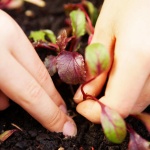
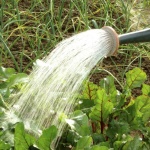
Soil requirements
Detroit thrives in fertile, loose soil with a neutral pH. Sandy loam or loam is ideal. The structure of too heavy clay soil will be improved by a peat additive, the introduction of sand. Wood ash will help reduce acidity.
The predecessors of beets in the garden should not be carrots and cabbage. This culture shows good development after potatoes, cucumbers, onions.
Disease and pest resistance
Detroit is "charged" with a fairly strong immunity to many diseases, but it can be affected by peronosporosis (downy mildew). You can fight the disease by spraying with fungicides and agrotechnical measures: plowing the soil and sanitary weeding.
During storage, one should beware of fungal infections of gray and white rot. For prevention, it is very important to maintain the correct temperature and humidity conditions in the room, regularly check the stored crop and remove spoiled roots.
Pests also pose a threat to plants, especially the bear and the caterpillar of the winter moth.

